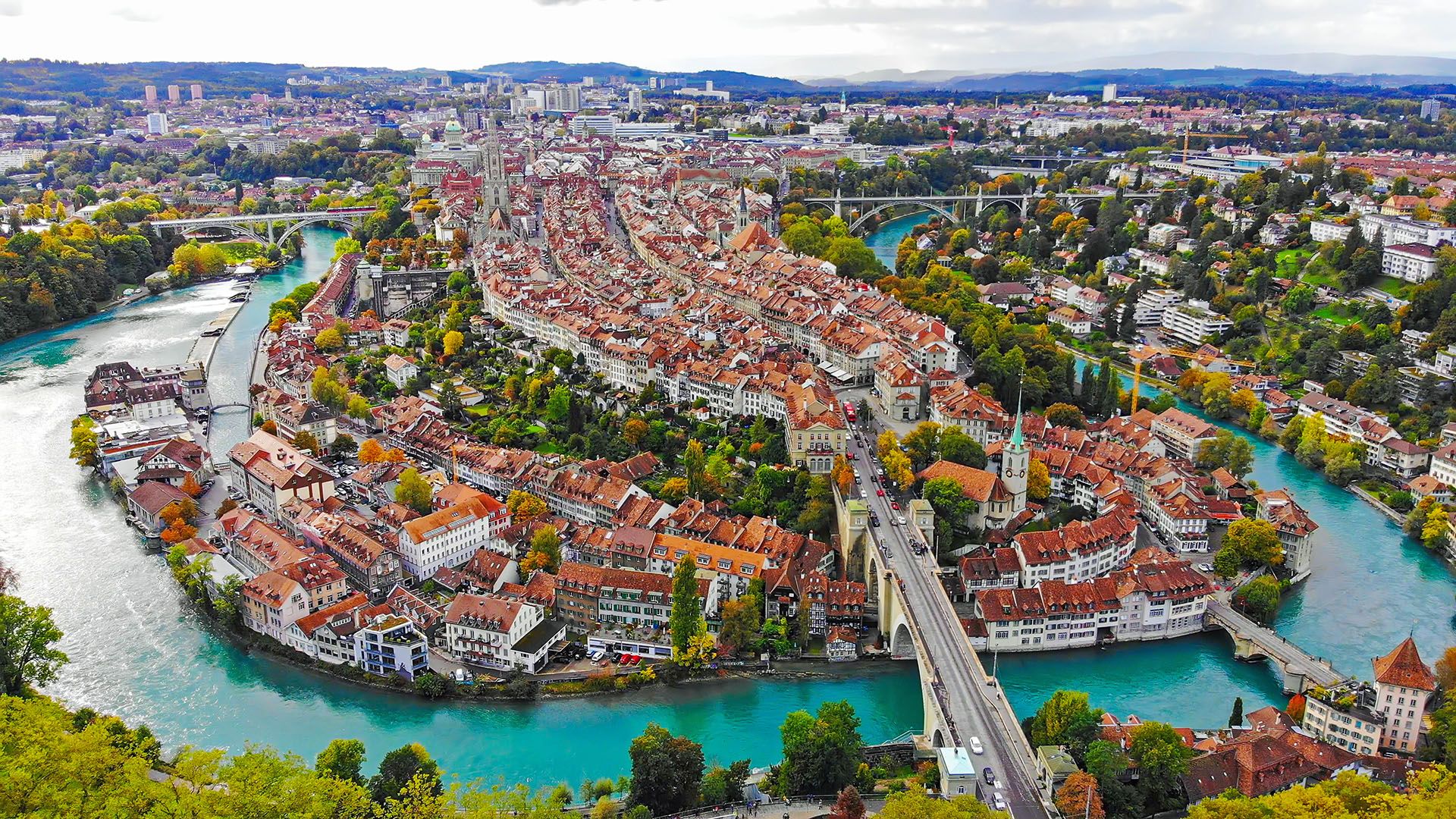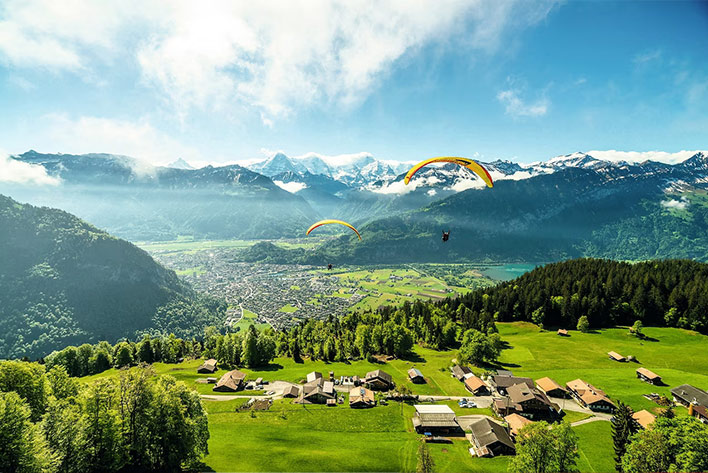
Creating a blog on Switzerland can cover a wide range of topics, from travel and culture to nature and history. Here's a comprehensive outline along with some key content ideas for your blog. I'll break it down into different sections for better organization.
Top Tourist Destinations in Switzerland Focus on some of the most iconic places to visit. You can divide the destinations into different regions for variety.
The Swiss Alps:
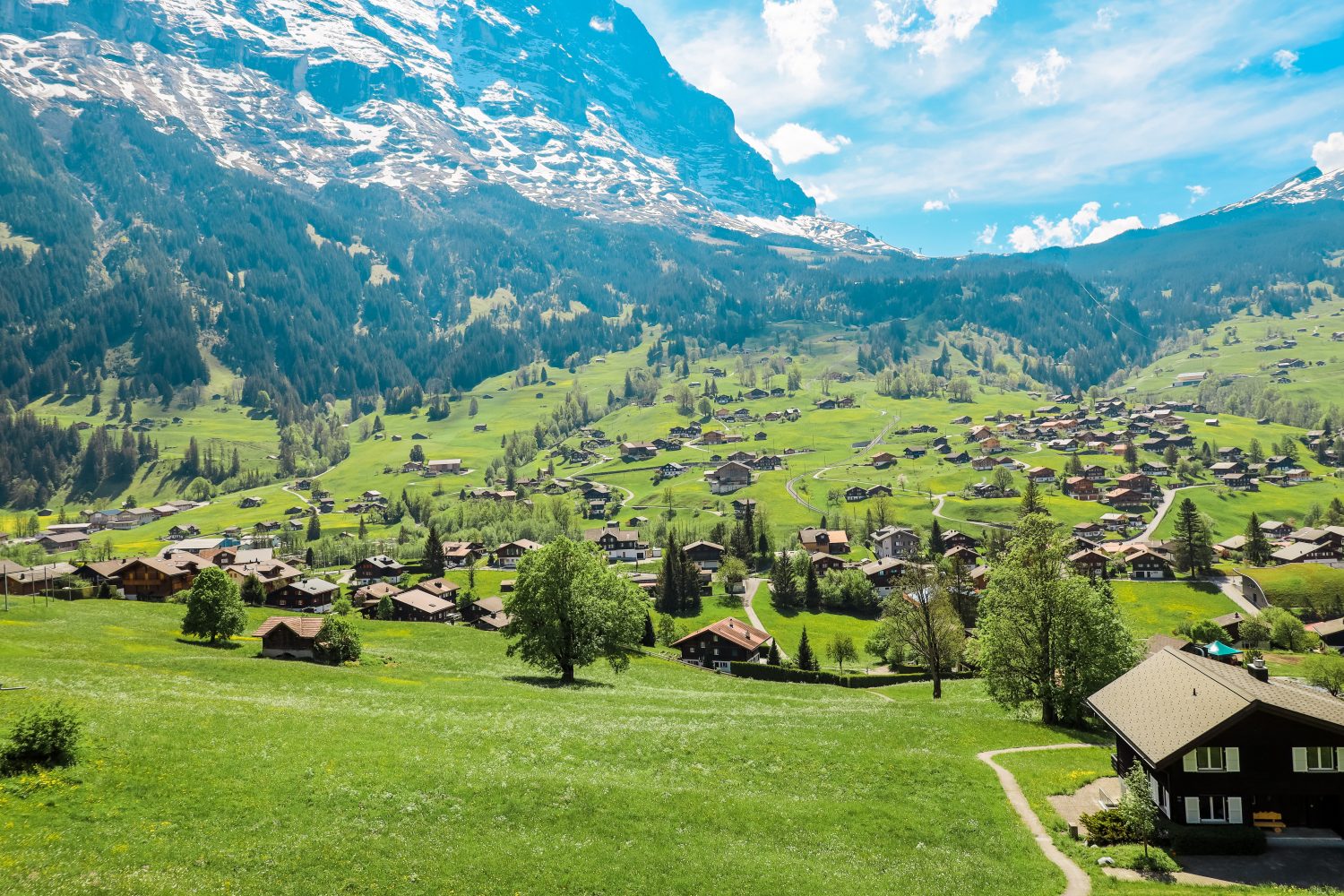
The mountainous alpine region of Switzerland is referred to as the Swiss Alps. In Switzerland’s four national languages, the Swiss Alps are known as Schweizer Alpen (German), Alpes suisses (French), Alpi svizzere (Italian), and Alps svizras (Romansch). The Swiss Alps are one of the three main geographic regions of Switzerland, the other two being the Swiss Plateau and the Jura Mountains. The portion of the Alps lying within Switzerland is sometimes referred to as the Central Alps, but more commonly known as the Swiss Alps. The Alps cover 65% of Switzerland’s total land mass, making it one of the most mountainous of European countries. Although the Swiss Alps cover most of Switzerland, it is a lesser populated region of the country, although it is popular among outdoor enthusiasts for hiking and trekking tours. Some of the most popular long-distance treks in Europe lead through the Swiss Alps
Matterhorn:

Matterhorn, one of the best-known mountains (14,692 feet [4,478 metres]) in the Alps, straddling the frontier between Switzerland and Italy, 6 miles (10 km) southwest of the village of Zermatt, Switzerland. Though from the Swiss side it appears to be an isolated horn-shaped peak, it is actually the butt end of a ridge. The Swiss slope is not nearly as steep or as difficult to climb as the grand terraced walls of the Italian slope. The name Matterhorn means roughly “the peak in the meadows,” from the German words Matte (“meadow”) and Horn (“peak”); the Italian and French names likely allude to the antlers of a red deer (Italian: cervo; French: cerf). Matterhorn 1 of 3 Matterhorn the Matterhorn 2 of 3 the Matterhorn Tragedy and triumph: The first ascent of the Matterhorn3 of 3 Tragedy and triumph: The first ascent of the MatterhornOverview of the first successful ascent of the Matterhorn—the 1865 expedition led by Edward Whymper. See all videos for this article After a number of attempts, chiefly on the Italian side, the Matterhorn was first conquered from the Swiss arête on July 14, 1865, by the British explorer Edward Whymper, but four of his party fell to their deaths on the descent. Three days later it was scaled from the Italian side by a party of men from the village of Valtournanche, Italy, led by the Italian guide Giovanni Antonio Carrel. It is frequently ascended in summer, especially from Zermatt.
Interlaken:

Interlaken, town, Bern canton, central Switzerland. It lies along the Aare River, in the Bernese Highlands. Its name is derived from its position on the flat plain (Bödeli), 1,864 feet (568 m) above sea level, between Lakes (inter lacus) Brienz to the east and Thun to the west. The town grew up around a convent of Augustinian canons (1130–1528). It is one of Switzerland’s oldest and most frequented summer tourist resorts, and its main avenue (Höheweg) is lined with hotels. Interlaken commands a magnificent view of the Jungfrau (13,642 feet [4,158 m]) to the south and is a starting point for many Alpine excursions. Wood, electrical, and metal products, are manufactured there. Pop. (2007 est.) 5,279.
Lucerne
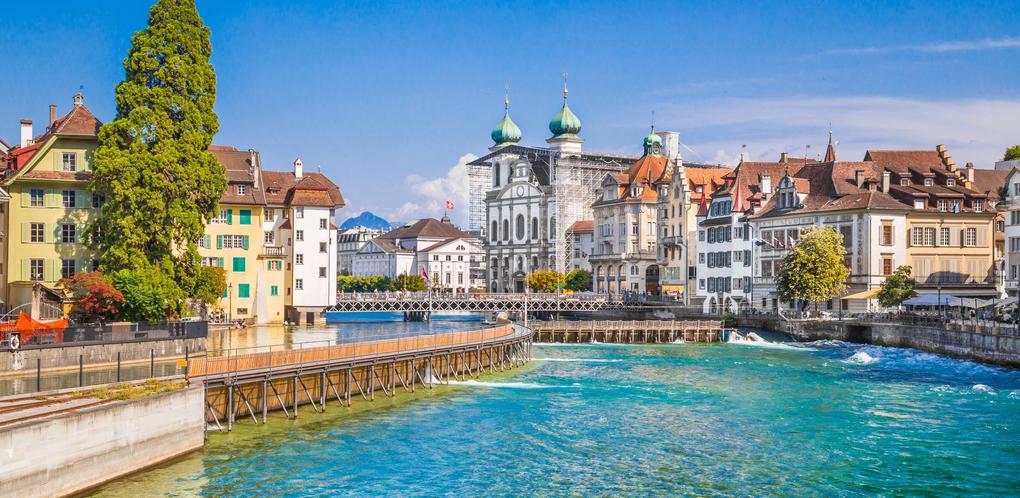
Lucerne , German Luzern, City (pop., 2000: 59,496), central Switzerland. Located southwest of Zürich, on Lake Lucerne and its Reuss River outlet, it developed around an 8th-century monastery. It joined the Swiss Confederation in 1332. A stronghold of Catholicism during the Reformation, it later took part in the Sonderbund war. It is a tourist centre, with its medieval walls, towers, and covered bridges. Among its many monuments is the famous Lion of Lucerne, carved in rock, which commemorates the Swiss Guards slain while defending the Tuileries Palace in Paris in 1792.
Zurich
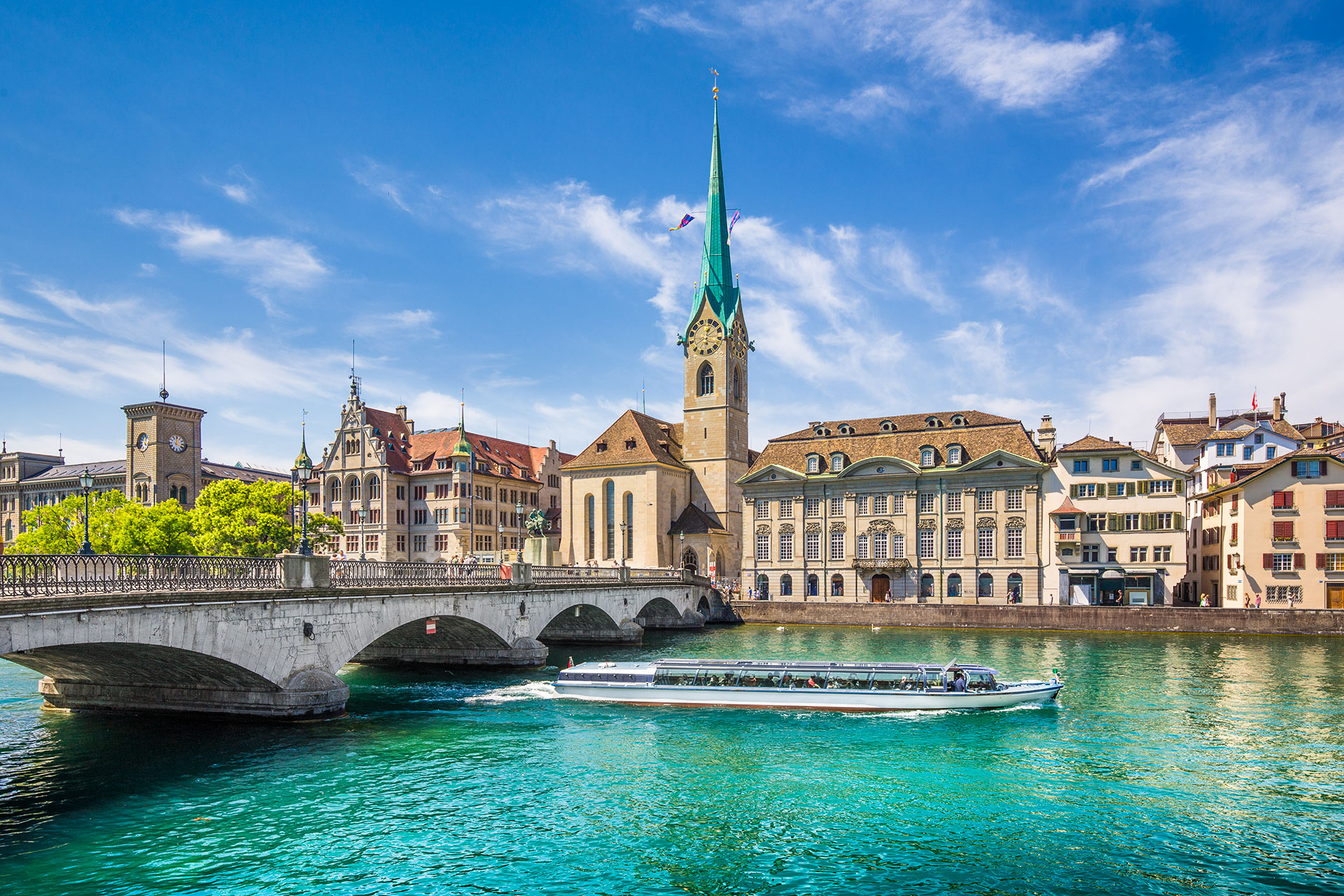
Zürich, largest city of Switzerland and capital of the canton of Zürich. Located in an Alpine setting at the northwestern end of Lake Zürich, this financial, cultural, and industrial centre stretches out between two forested chains of hills, about 40 miles (60 km) from the northern foothills of the Alps. Two rivers, the Limmat and Sihl, run through the city. Zürich’s western and northeastern limitations are formed by the Albis mountains (which include the 2,850-foot [870-metre] Üetliberg, considered the “top” of Zürich, with an idyllic view of the lake, mountains, and city) and by Zürichberg, a wooded hilly area. Area city, 34 square miles (88 square km). Pop. (2010) 372,857.
Geneva:

Geneva, city, capital of Genève canton, in the far southwestern corner of Switzerland that juts into France. One of Europe’s most cosmopolitan cities, Geneva has served as a model for republican government and owes its preeminence to the triumph of human, rather than geographic, factors. It developed its unique character from the 16th century, when, as the centre of the Calvinist Reformation, it became the “Protestant Rome.” The canton of Genève has a total area of 109 square miles (282 square kilometres), of which seven square miles constitute the city proper. Territorial isolation has been a basic feature of this region, which did not establish its definitive frontiers until 1815. Cut off politically and culturally after the Reformation from its natural geographic surroundings in Roman Catholic France and Savoy, Geneva was forced to establish an attenuated but powerful network of intellectual and economic relationships with the rest of Europe and with nations overseas. A city-state transformed after many vicissitudes into a democratic Swiss canton, Genève has functioned primarily as a centre of commerce, in contact with both Germanic and Mediterranean countries. The contemporary city of Geneva is, above all, a service metropolis, retaining its financial importance and housing the headquarters of many public and private international organizations. Pop. (2010) city, 187,470; urban agglom., 544,772.
Basel:

Basel has often been the site of peace negotiations and other international meetings. The Treaty of Basel (1499) ended the Swabian War.[56] Two years later Basel joined the Swiss Confederation.[57] The Peace of Basel in 1795 between the French Republic and Prussia and Spain ended the First Coalition against France during the French Revolutionary Wars.[58] In more recent times, the World Zionist Organization held its first congress in Basel from 29 August through 31 August 1897. Because of the Balkan Wars, the (Socialist) Second International held an extraordinary congress at Basel in 1912.[59] In 1989, the Basel Convention was opened for signature with the aim of preventing the export of hazardous waste from wealthy to developing nations for disposal.[60]
Bern
